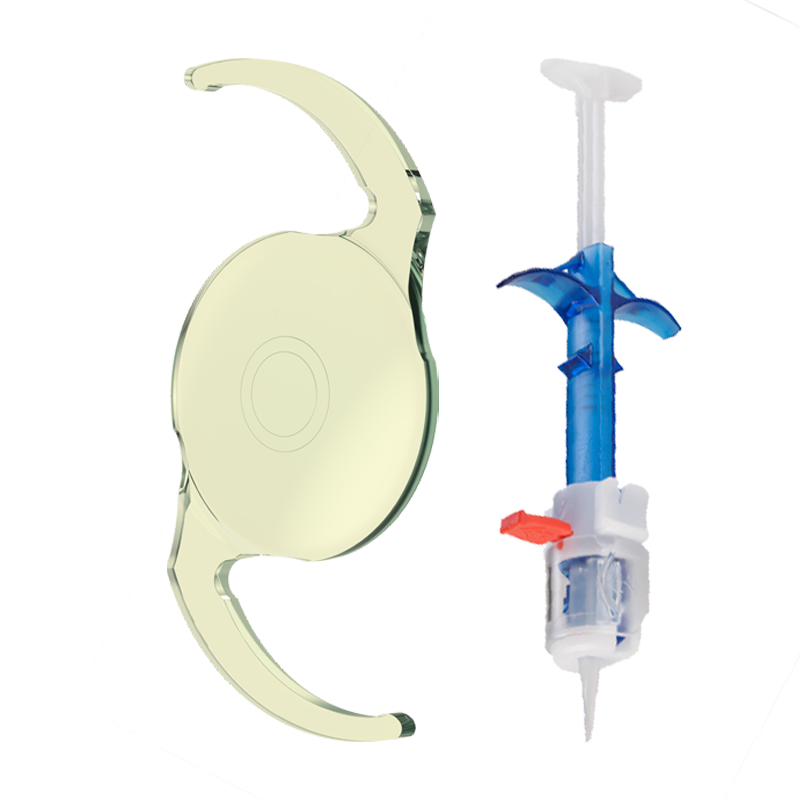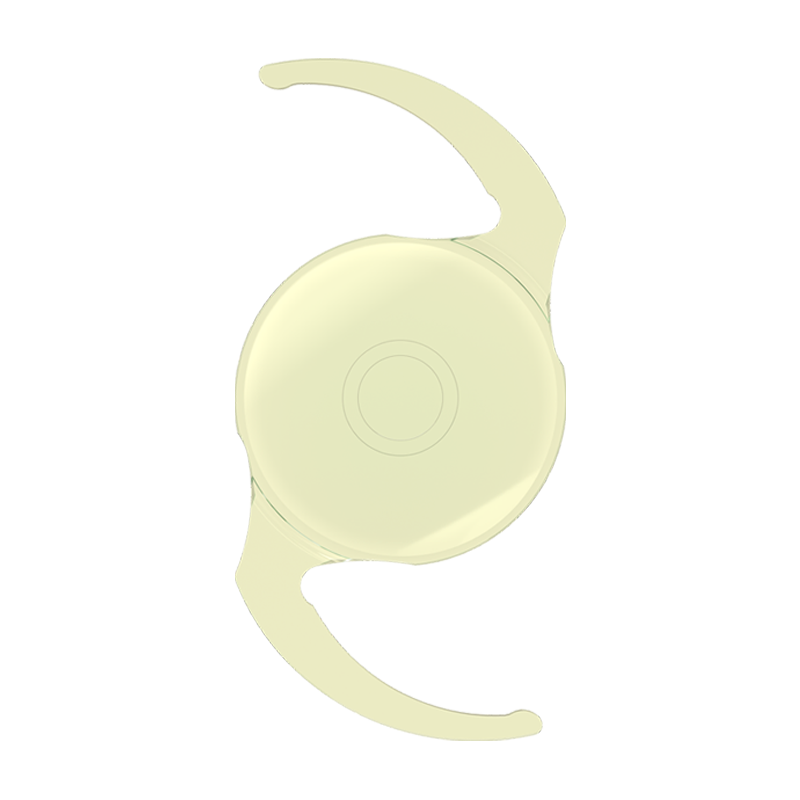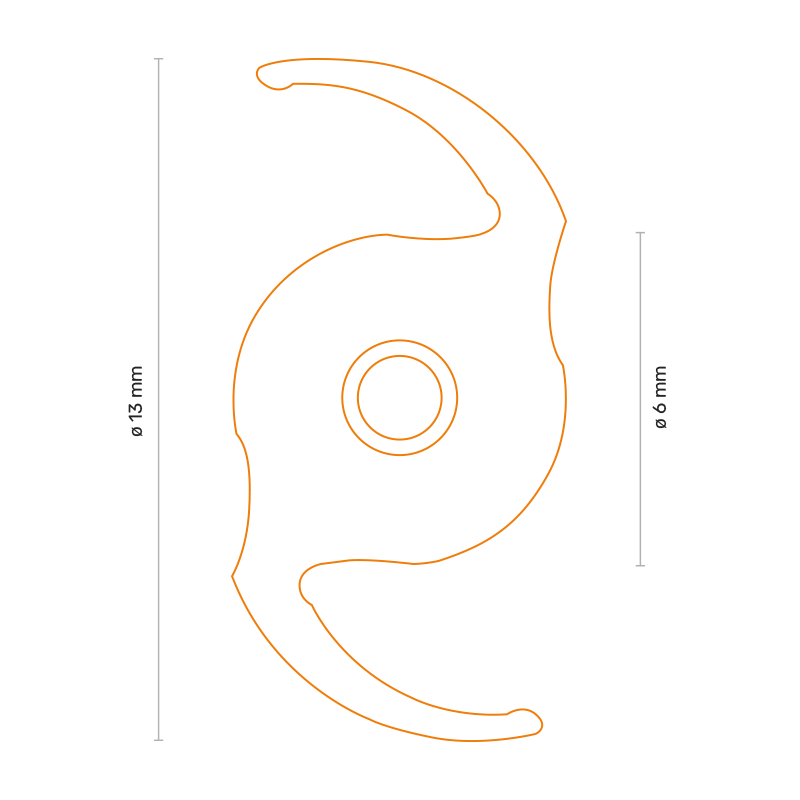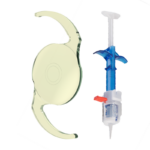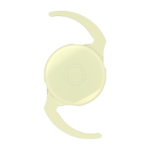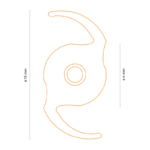Basis Z EDOF
The Basis Z EDOF is an aspheric capsular bag lens with EDOF optics.
Distance and intermediate visual acuity are achieved through Wavefront Linking (non-diffractive optics design).
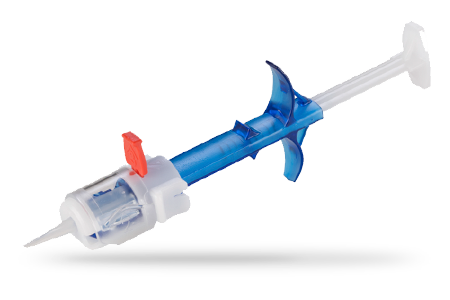
1st INJECT preloaded system
Fully preloaded, single-use IOL injector for the implantation of a hydrophobic foldable intraocular lens in the eye.
From 1.8 to 2.4 mm, depending on the cartridge size.
Cartridge + injector in blister; 1 disposable injection kit per box.
Silicone plunger for push injections.
2.5 years after sterilization.
Easy to use thanks to 4-click injection system.
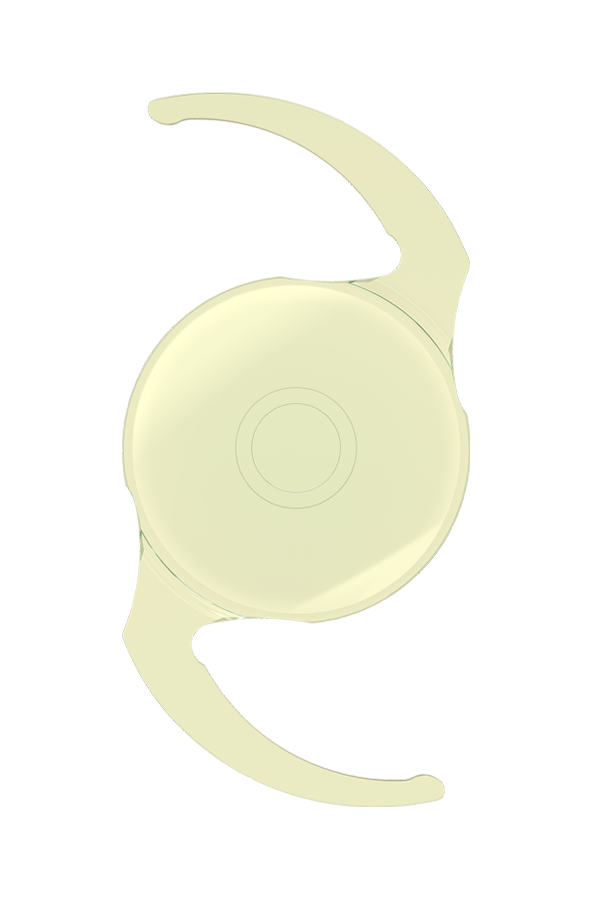
Technical specifications
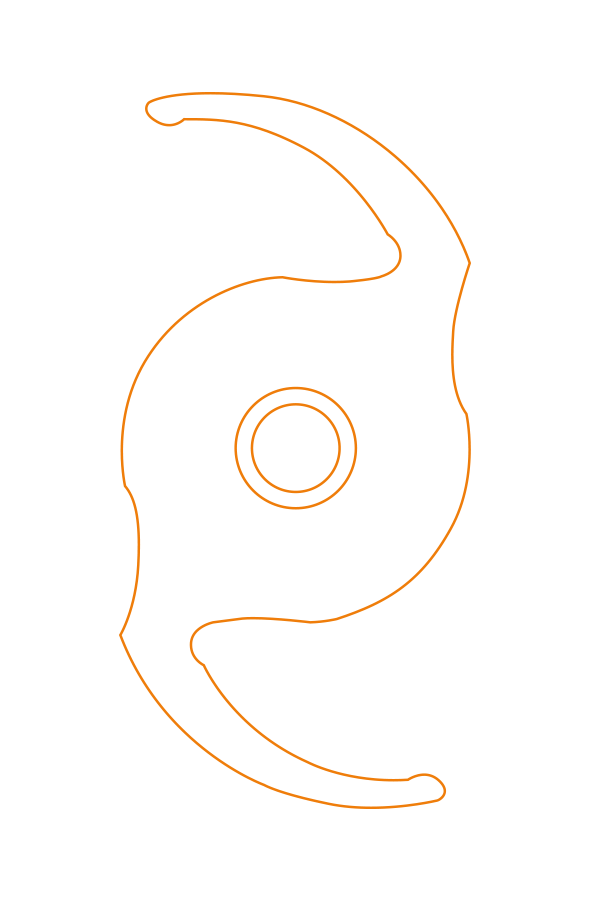
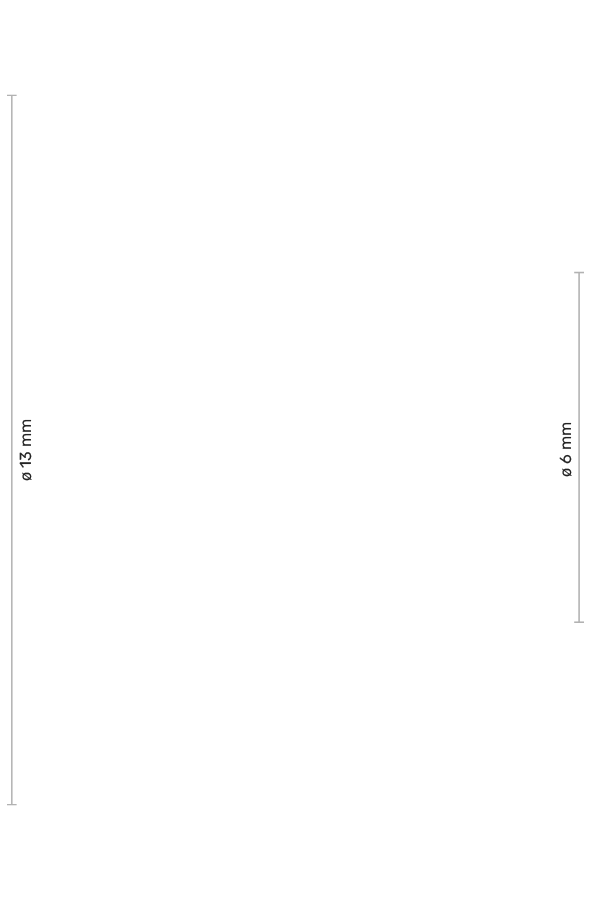
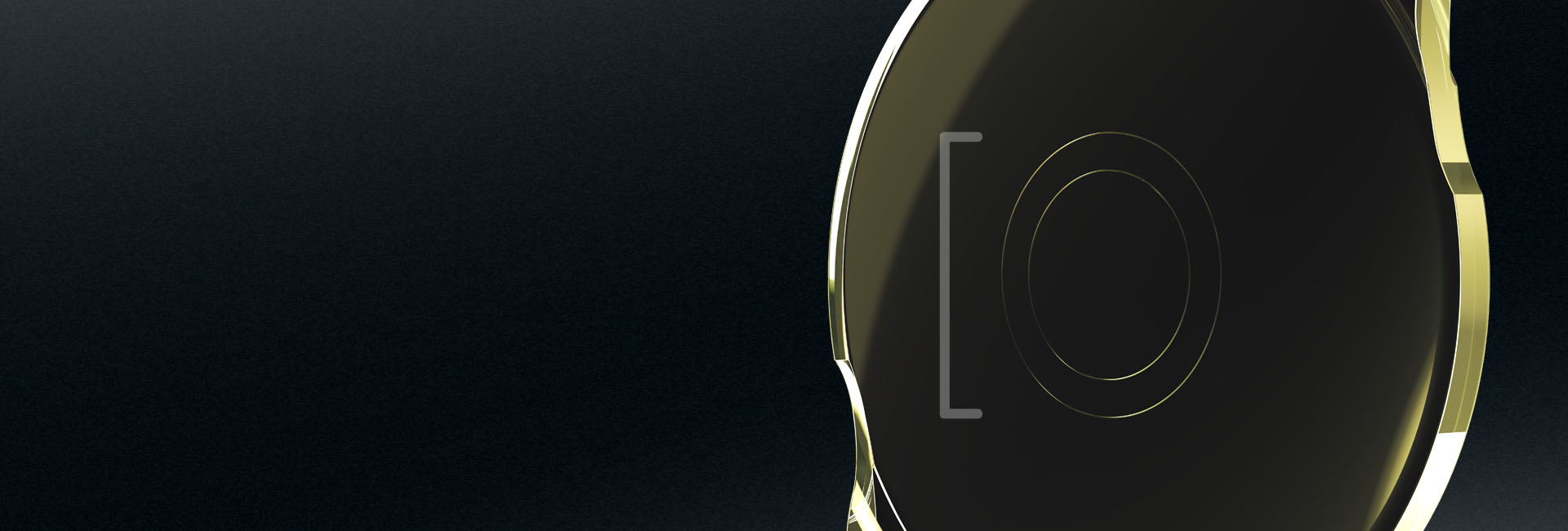
Evolution of the standard
Outstanding EDOF performance and minimized glistening. Using innovative wavefront linking technology.
Increased efficiency and safety,
reduced glistening
Integrated into the proven Basis Z platform, the Basis Z EDOF allows standardized procedures for efficient and safe implantation. At the same time, the hydrophobic material ensures a high Abbe number and a low refractive index: As it contains significantly fewer microvacuoles, glistening is significantly reduced, resulting in fewer visual disturbances and a high quality of vision.(5)
What high-end EDOF performance means
The criteria for EDOF lenses defined by the American National Standard Institute (ANSI) in ANSI standard Z80.35 2018 A are as follows:
- Corrected distance visual acuity (CDVA) not worse than 0.1 logMAR compared to monofocal IOLs
- Depth of focus at 0.2 logMAR at least 0.5 D greater than with monofocal IOLs
- 50 percent of eyes achieve a visual acuity of 63 percent in the intermediate range of focus (66 cm)
Thanks to Wavefront Linking, the Basis Z EDOF achieves outstanding EDOF performance and exceeds the ANSI criteria by a significant margin:

Excellent
distance visual acuity
with a mean of -0.04 +0.08 logMAR for an active lifestyle

Uncompromising intermediate visual acuity
of 0.08 + 0.18 logMAR for comfortable depth of focus

Functional
near visual acuity
of 0.19 + 0.26 logMAR Reading glasses are still necessary for comfortable near vision
The intraocular lens also delivers above-average performance in terms of the light distortion index (LDI): The LDI values of the Basis Z EDOF are relatively low – especially in comparison with other IOLs on the market – and thus enable minimizing dysphotopsias.(6)
Downloads
Questions about the Basis Z EDOF
Thanks to its non-diffractive optics design and Wavefront Linking technology, the Basis Z EDOF lens achieves excellent distance and intermediate visual acuity as well as functional near visual acuity, while simultaneously reducing the risk of dysphotopsias considerably in comparison with trifocal IOLs. Spectacles are often only needed for near vision in poor lighting conditions.
The Basis Z EDOF lens contains three refractive zones that create particular distance and intermediate focal points. Wavefront Linking technology extends these focal points by connecting the refractive zones using specially designed elements. In this way, light is evenly distributed along the optical axis, resulting in an extended range of focus and avoiding the visual disturbances that occur with diffractive lenses.
With the Basis Z EDOF, the innovative EDOF technology is integrated into the proven Basis Z platform. The Basis Z EDOF lens can therefore be implanted like a simple monofocal lens in a standardized procedure using a preloaded system with an incision size of 2.2 millimeters, whereby a high degree of safety and efficiency is guaranteed during surgery.
In particular, the Basis Z EDOF lens appeals to cataract and presbyopic patients with an active lifestyle who, in addition to high vision comfort, place great importance on spectacle independence. The extended range of focus means that they do not need additional visual aids for most activities, including sports. Because of the reduced visual disturbances, even driving at night is usually not a problem.
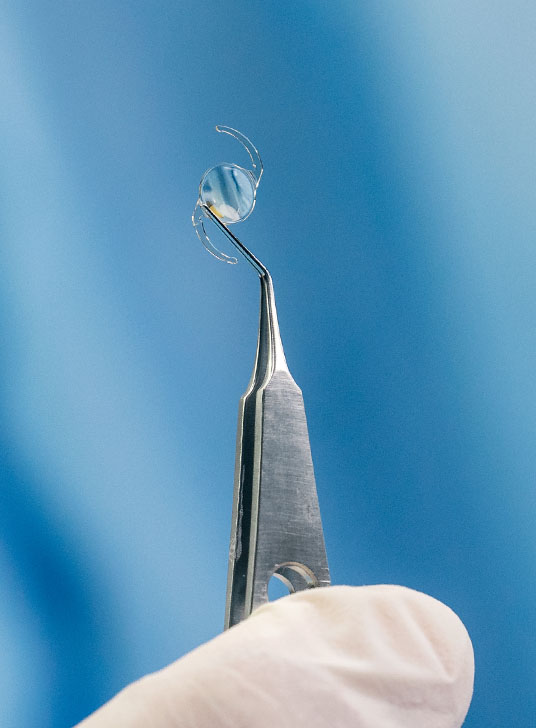
Literature and references
(1) Györy-Medicontur/HB CER 2022 (2) Medicontur Clinical Advisory Board, Budapest, Hungary 27th May 2022. (3) Courtesy of the Medicontur/RnD department, 2022. (4) Alarcon A, Canovas C, Rosen R et al. Preclinical metrics to predict through-focus visual acuity for pseudophakic patients; Biomed Opt Express, 2016;7 (5):1887-1888. doi:10.1364/BOE.7.001877 (6) Argay A, Vamosi P. The assessment of the impact of glistening on visual performance in relation to tear film quality. PLoS One. 2020;15 (7) Courtesy of J. Fernández and M. Rodríguez-Vallejo; QVision, Almería, Spain, unpublished data.

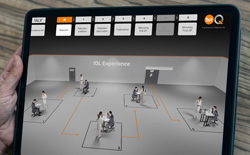 IOL-Experience
IOL-Experience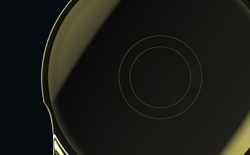 Technologies
Technologies IOL calculators
IOL calculators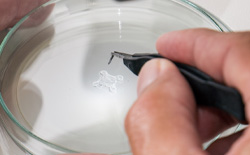 Service & handling
Service & handling Sustainability
Sustainability Congresses and events
Congresses and events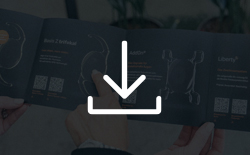 Download Center
Download Center